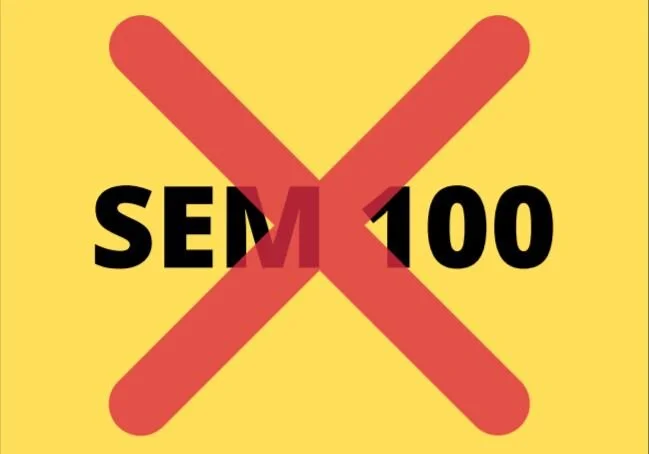Why SEM 100 Literally Sucked
graphic by neha penmetsa
Picture a musty room all the way across campus, twenty new faces you didn’t really wanna get to know, and a poorly-structured syllabus that allowed like 5 ditches. Now ask yourself: why the fuck would you show up? That’s the question we asked ourselves as freshmen every time we trudged to SEM 100.
The class originated with (allegedly) good intentions in mind. It was a way to introduce first-years to some new friends and casually emphasize the proliferating importance of racial and cultural diversity education at this goddamn university. Spoiler Alert! The university only succeeded at one of these goals, and our new friends from SEM 100 can tell you which one it was.
As several acts of racial discrimination have spread across SU campus, upperclassmen are dying to know what freshman even learned in this class-- especially since the #NotAgainSU movement began because of racist graffiti in a freshman dorm. The short answer? Practically nothing. For those of you who didn’t have to sit through those six weeks of hell, allow me to enlighten you.
Every year, SEM 100 is supposed to be based around a book that initiates dialogue about diversity. This year, Hope Jahren’s Lab Girl was chosen. I don’t know if you guys know my gal Hope or her story, considering 99.9% of students refused to waste their time reading it, but the book pretty much goes like this:
“Hi, my name is Hope Jahren. I am a white woman who loves trees. It is hard to get a job in the dirt-lovers industry. The end.”
Taken directly from a Syracuse First-Year newsletter, Vice Chancellor and Provost Michele Weatly wrote that,
“The Inclusive Leadership Assembly selected Lab Girl because it addresses ideas of identity, belonging, diversity, inclusion and health and wellness from a global perspective.”
But riddle me this-- how are the 3,813 students occupying the freshman class supposed to learn about diversity and inclusion from a white woman rattling on and on about leaves? Someone lmk.
White people make up over 57% of our campus. That’s a hell of a lot more than the minority populations. So, sure, the story Lab Girl may appeal more to Syracuse’s audience, but that’s not the point. The stories of white people have already been told. In fact, we can’t figure out how to shut up about them! It’s why we always hear about Christopher Columbus, and never the thousands Native Americans he brutally murdered. It’s why the university passed up on Braiding Sweetgrass, a novel by Robin Wall Kimmerer, who happens to be a Potawatomi Native American and a literal professor at ESF. The book has nearly identical themes to Lab Girl (and is much better… oops), yet we STILL read a book by a white woman. It is time for the white people of Syracuse to l i s t e n.
With all that being said, here are the changes our students are demanding in the SEM 100 curriculum next year:
1. A course reading centered on a minority, in order to properly open the door for conversations about different cultures in our student body.
2. Education on phenomena such as stereotyping, implicit bias, microaggression that can help everyone understand the struggles people of color face on a daily basis.
3. Faculty who come from a diverse array of backgrounds and are able to monitor conversation to be not only respectful, but constructive.
4. Activities routed in exploring the differences between the races, genders, religions, and economic classes and appreciating and understanding them.
5. An entire lesson on why racist/sexist/homophobic jokes are NOT funny (because clearly some of us need were unaware that bigotry wasn’t okay…) It’s time for us to actually invest in educating that 57%. It’s time for us to do better.
#NotAgainSU

